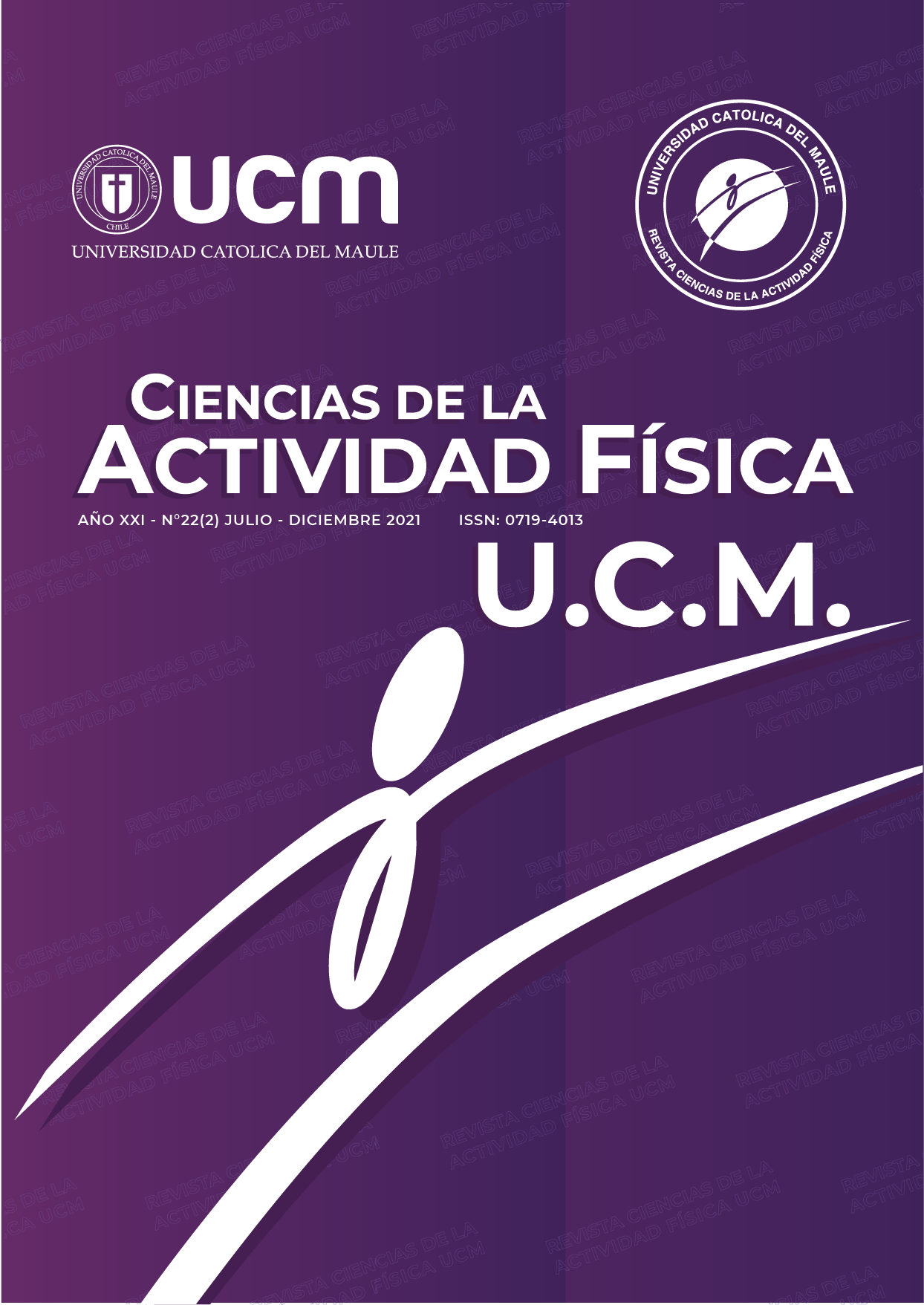Efecto de un programa de Educación Física con actividades motrices para desarrollar el área motora en niños con discapacidad intelectual
Contenido principal del artículo
Resumen
Detalles del artículo
Barroso, G., Sánchez, B., & Calero, S. (2016). Metodología para el desarrollo de programas de actividad física adaptada. Parte I: Estudio de la discapacidad en Ecuador. Lecturas: Educación Física y Deportes (EFDeportes.com), 20(212). https://www.efdeportes.com/efd212/estudio-de-la-discapacidad-en-ecuador.htm
Cerda, C. (1990). Niños con necesidades educativas especiales. Promolibro.
Chasey, W., & Wyrick W. (1971) Effects of a physical developmental program on psychomotor ability of retarded children. American Journal of Mental Deficiency, 75(5), 566-570. https://europepmc.org/article/med/5551501
Dickinson, K. & Place, M. (2014). A randomised control trial of the impact of a computer-based activity programme upon the fitness of children with autism. Autism Reseach and Treatement, 2014, 1-9. https://doi.org/10.1155/2014/419653
Durivage, J. (1999). Educación y Psicomotricidad. Manual para el Nivel Preescolar. Trillas.
Engel, A., Broderick, C., Van Doorn, N., Hardy, L., & Parmenter, B. (2018). Exploring the relationship between fundamental motor skill interventions and physical activity levels in children: A systematic review and meta-analysis. Sports Medicine, 48(8),1845–1857. https://doi.org/10.1007/s40279-018-0923-3
Fragala-Pinkham, M., Haley, S., & O’Neil, M. (2008). Group aquatic aerobic exercise for children with disabilities. Developmental Medicine and Child Neurology, 50(11), 822–827. https://doi.org/10.1111/j.1469-8749.2008.03086.x
Instituto Nacional de Estadística y Geografía (INEGI). (2017). La discapacidad en México, datos al 2014: versión 2017. INEGI. https://www.inegi.org.mx/contenidos/productos/prod_serv/contenidos/espanol/bvinegi/productos/
nueva_estruc/702825094409.pdf
Logan, S., Ross, S., Chee, K., Stodden, D. & Robinson, L. (2018). Fundamental motor skills: A systematic review of terminology. Journal of Sports Sciences, 36(7), 781–796. https://doi.org/10.1080/02640414.2017.1340660
Morgan, P., Barnett, L., Cliff, D., Okely, A., Scott, H., Cohen, K., & Lubans, D. (2013). Fundamental movement skill interventions in youth: A systematic review and meta-analysis. Pediatrics, 132(5), e1361-e1383. https://doi.org/10.1542/peds.2013-1167
Newborg, J., Stock, J., Wnek, L., De la Cruz, M., & González, M. (2004). Battelle: Inventario de desarrollo. TEA.
Organización Mundial de la Salud. (2011). Informe Mundial sobre la Discapacidad: Resumen. https://www.who.int/disabilities/world_report/2011/summary_es.pdf
Schalock, R. (2009). La nueva definición de discapacidad intelectual, apoyos individuales y resultados personales. Siglo Cero, 40(229), 22-39. https://dialnet.unirioja.es/servlet/articulo?codigo=2985250
Sowa, M., & Meulenbroek, R. (2012) Effects of physical exercise on autism spectrum disorders: A meta-analysis. Research in Autism Spectrum Disorders, 6(1), 46-57. https://doi.org/10.1016/j.rasd.2011.09.001
Vallbona, C. (2003). La actividad física como elemento de salud para personas discapacitadas. En J. Martínez (Ed.), Conferencia Internacional sobre Deporte Adaptado. Libro de Actas (pp.283-296). Instituto Andaluz del Deporte.

Esta obra está bajo una licencia de Creative Commons Reconocimiento-NoComercial-CompartirIgual 4.0 Internacional

